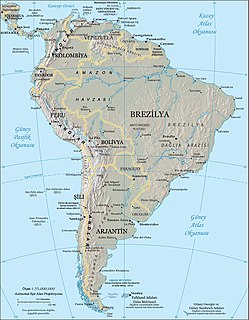Related Research Articles

The black-footed cat, also called the small-spotted cat, is the smallest wild cat in Africa, having a head-and-body length of 35–52 cm (14–20 in). Despite its name, only the soles of its feet are black or dark brown. With its bold small spots and stripes on the tawny fur, it is well camouflaged, especially on moonlit nights. It bears black streaks running from the corners of the eyes along the cheeks, and its banded tail has a black tip.

The doucs or douc langurs make up the genus Pygathrix. They are colobine Old World monkeys, native to Southeast Asia, which consists of these 3 species: red-shanked douc, black-shanked douc, and gray-shanked douc.

The black-footed mongoose is a mongoose species native to Central Africa, where it inhabits deep deciduous forests from eastern Nigeria to the southern Democratic Republic of the Congo. It has been listed as Least Concern on the IUCN Red List since 2008. It is omnivorous and feeds on ants, termites, Orthoptera, small rodents, frogs, lizards and fruits. It is mostly solitary and nocturnal.

Oligoryzomys nigripes, also known as the black-footed colilargo or the black-footed pygmy rice rat, is a rodent in the genus Oligoryzomys of family Cricetidae. Oligoryzomys nigripes is a species that has been further divided into different sister taxa throughout history. It is found in different countries in South America. It is a large species with long ears, dark yellow to dark brown upperparts, sharply delimited from the whitish underparts, and often a pink girdle on the chest. This species of rat spends much of its life among the trees. The karyotype is 2n = 62, FNa = 78–82.

The black-shanked douc is an endangered species of douc found mostly in the forests of eastern Cambodia, with some smaller populations in Vietnam. This species is unique among the doucs in having a largely greyish-blue face. No global population estimate exists, although the Wildlife Conservation Society reports an estimated 23,000 individuals present in Cambodia's Keo Seima Wildlife Sanctuary. Prior to the discovery of the significance of this population, the largest populations were believed to be in adjacent Vietnam, where the largest known population is around 500-600 individuals. They are primarily arboreal and their diet consists of leaves, from which they obtain most of their water.

The Palawan flying squirrel or tapilak is a species of rodent in the family Sciuridae. It is endemic to the Philippines.

The black-footed shrew is a species of mammal in the family Soricidae. It is endemic to northern and central Sulawesi, Indonesia where it lives on the floor of the tropical forests. The International Union for Conservation of Nature has assessed its conservation status as being of "least concern".

Oberea is a genus of longhorn beetles, most of which are stem borers of various plants, including blackberries and their relatives.
Oberea consentanea is a species of beetle in the family Cerambycidae. It was described by Francis Polkinghorne Pascoe in 1867. It is known from Borneo.
Oberea inclusa is a species of beetle in the family Cerambycidae. It was described by Francis Polkinghorne Pascoe in 1858. It contains the varietas Oberea inclusa var. discipennis.
Oberea rubetra is a species of beetle in the family Cerambycidae. It was described by Francis Polkinghorne Pascoe in 1858. It is known from Sumatra, Borneo and Malaysia.
Oberea erythrostoma is a species of beetle in the family Cerambycidae. It was described by Heller in 1915. It is known from the Philippines.

Oberea euphorbiae is a species of beetle in the family Cerambycidae. It was described by Ernst Friedrich Germar in 1813 originally under the genus Saperda. It has a wide distribution in Europe. It feeds on Euphorbia palustris.
Oberea ferruginea is a species of beetle in the family Cerambycidae. It was described by Thunberg in 1787.

Oberea fuscipennis is a species of beetle in the family Cerambycidae. It was described by Chevrolat in 1852.
Oberea vittata is a species of beetle in the family Cerambycidae. It was described by Blessig in 1873. It is known from Russia, China, Mongolia, and Japan.
Allocnemis nigripes, formerly Chlorocnemis nigripes, is a species of white-legged damselfly in the family Platycnemididae. It is found in Cameroon, Central African Republic, the Democratic Republic of the Congo, Equatorial Guinea, Nigeria, and Uganda. Its natural habitats are subtropical or tropical moist lowland forests and freshwater springs.

Laminaria nigripes is a species of kelp found in the North Atlantic and North Pacific within Arctic and subarctic waters including Vancouver Island, Haida Gawaii, Greenland, Iceland, Norway, Downeast Maine, and the Bay of Fundy. The species may be found exclusively in the Arctic, but frequent misidentification of samples has led to speculation and debate over whether the actual range is subarctic or Arctic. The species is commonly confused with Laminaria digitata and Laminaria hyperborea and is at risk from climate change.
References
- ↑ BioLib.cz - Oberea nigripes. Retrieved on 8 September 2014.